3D Globe
Mobile & AR
Technology: Web Graphics Library (WebGL)
The following lines provide a basic information about the WebGL technology used to create and embed the 3D scenes seamlessly into the standard web pages of my Site, as well as a short insight into its historical context.
From the historical point of view, the first significant effort to display interactive 3D objects embedded within standard web pages dates back to mid ninetees, when the file format called VRML (Virtual Reality Modeling Language) was conceived. Development of the VRML format was completed by its official acceptance as the ISO/IEC DIS 14772-1 International Standard in 1997.
As it gathered lot of attention initially, number of independent software companies raced to deploy plug‑ins allowing then popular web browsers Netscape Navigator and Internet Explorer to understand VRML files and render their 3D content. After an eventful transition period two major providers of freely downloadable VRML plug‑ins persisted – Cortona3D (formerly ParallelGraphics) and Bitmanagement (formerly Blaxxun Interactive).
The decision of all major web browser vendors to drop support of the NPAPI‑based plug‑ins for security reasons in 2016 meant sudden stop to most VRML‑related activities. This move however provided opportunity for the new, more advanced WebGL technology, which, because of its foundation in the most current Web standards, runs in modern browsers directly – without the need to download and install any plug‑ins or additional applications.
WebGL (Web Graphics Library) is in fact a JavaScript API for rendering 2D and 3D graphics within web pages, where its code can blend well with other page elements. Because the direct coding of complex 3D scenes would be too difficult, many specialized tools have already appeared, not to mention quite a few renowned desktop 3D modeling applications obtaining WebGL export abilities.
My software of choice for authoring the interactive WebGL content is the game engine/editor Unity. It accepts 3D models from external sources, allows to set their appearance, behaviour and interactivity, and finally either exports the result as a stand‑alone desktop or mobile application or produces the WebGL code for online publication on the web. Few humble results of my trifling with the Unity editor can be found in the 3D Showroom section. Its interactive 3D content can be viewed using recent desktop or mobile versions of all the mayor web browsers (Chrome, Firefox, MS Edge, Opera, Safari).
To find out if your browser is able to display the WebGL 3D scenes, visit this WebGL Test page, or for more detailed information go to the WebGL Report site.
From the historical point of view, the first significant effort to display interactive 3D objects embedded within standard web pages dates back to mid ninetees, when the file format called VRML (Virtual Reality Modeling Language) was conceived. Development of the VRML format was completed by its official acceptance as the ISO/IEC DIS 14772-1 International Standard in 1997.
As it gathered lot of attention initially, number of independent software companies raced to deploy plug‑ins allowing then popular web browsers Netscape Navigator and Internet Explorer to understand VRML files and render their 3D content. After an eventful transition period two major providers of freely downloadable VRML plug‑ins persisted – Cortona3D (formerly ParallelGraphics) and Bitmanagement (formerly Blaxxun Interactive).
The decision of all major web browser vendors to drop support of the NPAPI‑based plug‑ins for security reasons in 2016 meant sudden stop to most VRML‑related activities. This move however provided opportunity for the new, more advanced WebGL technology, which, because of its foundation in the most current Web standards, runs in modern browsers directly – without the need to download and install any plug‑ins or additional applications.
WebGL (Web Graphics Library) is in fact a JavaScript API for rendering 2D and 3D graphics within web pages, where its code can blend well with other page elements. Because the direct coding of complex 3D scenes would be too difficult, many specialized tools have already appeared, not to mention quite a few renowned desktop 3D modeling applications obtaining WebGL export abilities.
My software of choice for authoring the interactive WebGL content is the game engine/editor Unity. It accepts 3D models from external sources, allows to set their appearance, behaviour and interactivity, and finally either exports the result as a stand‑alone desktop or mobile application or produces the WebGL code for online publication on the web. Few humble results of my trifling with the Unity editor can be found in the 3D Showroom section. Its interactive 3D content can be viewed using recent desktop or mobile versions of all the mayor web browsers (Chrome, Firefox, MS Edge, Opera, Safari).
To find out if your browser is able to display the WebGL 3D scenes, visit this WebGL Test page, or for more detailed information go to the WebGL Report site.
WebGL
Mobile & AR
Technology: 3D Globe (CesiumJS)
An easy way how to display whole Earth in a single web page, and how the old science fiction story came true.
To own a complete 3D globe of the planet Earth, with its elevated mountain ranges and deep valleys, all covered by realistic textures – and to be able to zoom from the space distance down to street level would seem as a sci‑fi few decades ago. In fact, I encountered this idea first time in the age of ten, while reading the old sci‑fi book written by today almost forgotten Czech author J. M. Troska in 1939: A genius scientist created a small copy of the real Earth during a high‑energy experiment in his laboratory. As the minified globe remained connected mysteriously with its big template, it was then possible to observe all the events happening on the real Earth using just a strong magnifying glass.
The story immediately came to my mind when I discovered the famous Google Earth geospatial application in 2011. It matched almost perfectly the old sci‑fi book description – the complete, interactive 3D Earth including elevated surface, textured by hi‑res satellite imagery and providing nearly up‑to‑date information about many human‑related entities, such as urban areas, business centers and transport infrastructure. The only significant difference resided in the necessity to use a PC instead of the magnifying glass. It was possible to attach whole range of additional elements to the globe surface using special API, and a browser plug‑in was available to embed the 3D globe into a standard web page.
The removal of plug‑in support by web browser vendors already mentioned here in the WebGL tab section naturally lead to complete redesign of the Google Earth application, causing its development slowdown and partial feature regression. The opportunity was immediatelly picked up, among others, by the Cesium Consortium, which offers its open‑source geospatial 3D mapping platform CesiumJS as a direct Google Earth replacement.
Using the web‑friendly WebGL graphic library, CesiumJS provides again an easy way to add custom objects and images to the surface of 3D Earth and integrate the whole interactive scene easily into a web page.
Whole series of my 3D models of interesting historical buildings, geo‑located in their real positions on the Earth surface provided by the CesiumJS platform, is shown in the My 3D Globe section. I have also used the same system in that section to present few recorded tracks of my holiday journeys and photos taken while on the road.
To own a complete 3D globe of the planet Earth, with its elevated mountain ranges and deep valleys, all covered by realistic textures – and to be able to zoom from the space distance down to street level would seem as a sci‑fi few decades ago. In fact, I encountered this idea first time in the age of ten, while reading the old sci‑fi book written by today almost forgotten Czech author J. M. Troska in 1939: A genius scientist created a small copy of the real Earth during a high‑energy experiment in his laboratory. As the minified globe remained connected mysteriously with its big template, it was then possible to observe all the events happening on the real Earth using just a strong magnifying glass.
The story immediately came to my mind when I discovered the famous Google Earth geospatial application in 2011. It matched almost perfectly the old sci‑fi book description – the complete, interactive 3D Earth including elevated surface, textured by hi‑res satellite imagery and providing nearly up‑to‑date information about many human‑related entities, such as urban areas, business centers and transport infrastructure. The only significant difference resided in the necessity to use a PC instead of the magnifying glass. It was possible to attach whole range of additional elements to the globe surface using special API, and a browser plug‑in was available to embed the 3D globe into a standard web page.
The removal of plug‑in support by web browser vendors already mentioned here in the WebGL tab section naturally lead to complete redesign of the Google Earth application, causing its development slowdown and partial feature regression. The opportunity was immediatelly picked up, among others, by the Cesium Consortium, which offers its open‑source geospatial 3D mapping platform CesiumJS as a direct Google Earth replacement.
Using the web‑friendly WebGL graphic library, CesiumJS provides again an easy way to add custom objects and images to the surface of 3D Earth and integrate the whole interactive scene easily into a web page.
Whole series of my 3D models of interesting historical buildings, geo‑located in their real positions on the Earth surface provided by the CesiumJS platform, is shown in the My 3D Globe section. I have also used the same system in that section to present few recorded tracks of my holiday journeys and photos taken while on the road.
WebGL
3D Globe
Technology: Mobile & AR (Augmented Reality)
Which type of 3D can be brought to mobile apps, what “Augmented Reality” actually means, and how can it be all integrated together.
Even when the interactive 3D scenes such as those shown in the 3D Showroom section can be presented to its audience worldwide just by embedding them into common web pages, in case of the mobile devices it may be desirable to utilize their specific interaction abilities and hardware performance directly and not through the unnecessary software layer of the internet browser.
Fortunately, proper authoring applications such as the Unity editor already mentioned here in the WebGL tab section allow easy conversion of the 3D scenes into fully‑fledged mobile applications, maintaining all their programmed interactivity and optimizing them for the mobile hardware.
Some examples of my mobile 3D applications, intended mainly as an aid to engineering educators and hobbyists, will be hopefully soon presented in the 3D Showroom section.
The use of mobile platforms, besides the ability to interact with the 3D scenes more naturally via touchscreens, brings also the possibility to access and modify the device's camera output. Utilizing the computing power of mobile hardware, a proper application can continuously analyze the camera's field of view and superimpose a “virtual” 3D object into the realtime camera output on the screen. Due to its proper positioning and perspective the object then appears as actually existing in the real environment.
Such process represents one of many flavours of so called Augmented Reality (AR) – a term meanig an ability to blend various interactive digital elements into the real‑world environments.
AR‑enabled mobile apps can be useful in many areas, including my favorite engineering education. For example – the textbook reader's experience can be enhanced by displaying a moving 3D model of combustion engine over its standard 2D illustration, making the principles of engine operation easier to grasp – and the learning process more attractive…
Also this kind of my mobile applications will soon be available in the 3D Showroom section.
Even when the interactive 3D scenes such as those shown in the 3D Showroom section can be presented to its audience worldwide just by embedding them into common web pages, in case of the mobile devices it may be desirable to utilize their specific interaction abilities and hardware performance directly and not through the unnecessary software layer of the internet browser.
Fortunately, proper authoring applications such as the Unity editor already mentioned here in the WebGL tab section allow easy conversion of the 3D scenes into fully‑fledged mobile applications, maintaining all their programmed interactivity and optimizing them for the mobile hardware.
Some examples of my mobile 3D applications, intended mainly as an aid to engineering educators and hobbyists, will be hopefully soon presented in the 3D Showroom section.
The use of mobile platforms, besides the ability to interact with the 3D scenes more naturally via touchscreens, brings also the possibility to access and modify the device's camera output. Utilizing the computing power of mobile hardware, a proper application can continuously analyze the camera's field of view and superimpose a “virtual” 3D object into the realtime camera output on the screen. Due to its proper positioning and perspective the object then appears as actually existing in the real environment.
Such process represents one of many flavours of so called Augmented Reality (AR) – a term meanig an ability to blend various interactive digital elements into the real‑world environments.
AR‑enabled mobile apps can be useful in many areas, including my favorite engineering education. For example – the textbook reader's experience can be enhanced by displaying a moving 3D model of combustion engine over its standard 2D illustration, making the principles of engine operation easier to grasp – and the learning process more attractive…
Also this kind of my mobile applications will soon be available in the 3D Showroom section.
Machinery
Mobile
Archive
3D Showroom: Architecture & History
Great Synagogue (Plzeň, CZ)
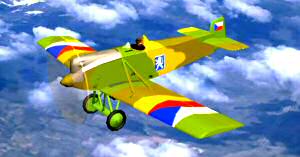
The Europe's second largest synagogue is presented here in both of its known forms:
– The original project of an imposing, 65 m tall Gothic style cathedral, submitted by the renowned Jewish Viennese architect Max Fleischer and refused by the Plzeň city councilors in 1888,
– and the subsequent more modest, only 45 m tall Moorish‑style design by the local architect Emmanuel Klotz, which was approved in 1890 and its construction completed in 1893. Luckily, the building has remained intact to the present day.
Re‑engineering and re‑building the unrealized Fleischer's proposal in 3D was possible mainly thanks to existence of his original construction drawings, owned and preserved by the Jewish Community Plzeň.
– The original project of an imposing, 65 m tall Gothic style cathedral, submitted by the renowned Jewish Viennese architect Max Fleischer and refused by the Plzeň city councilors in 1888,
– and the subsequent more modest, only 45 m tall Moorish‑style design by the local architect Emmanuel Klotz, which was approved in 1890 and its construction completed in 1893. Luckily, the building has remained intact to the present day.
Re‑engineering and re‑building the unrealized Fleischer's proposal in 3D was possible mainly thanks to existence of his original construction drawings, owned and preserved by the Jewish Community Plzeň.
Scene Features:
choose between two attractive versions of the famous building – imposing project and modest realizationexplore the Rabinical House with mikweh in the Synagogue vicinity
examine the inner structure of all presented objects
and more…
Last Update 2024-02-15
Author's Note:
Both me and the professional guarantor, Jan Soukup, M.Arch., appreciated the unique opportunity to work with the original 130 years old drawings, even when the incomplete Fleischer's documentation presented a real challenge.
Similar set of XIX. century drawings plus up‑to‑date documentation was available for the existing Synagogue building, but also there a solid dimensional reference appeared necessary; that was provided at the end by my own amateurish photogrammetric 3D model assembled from a drone imagery.
Early Medieval Settlement in The Starý Plzenec Area (Plzeň, CZ)

The first written mention of the fortified settlement at the Hurka hill and the adjacent urban area down in the Uslava River valley dates to A. D. 976.
During the next two centuries it had developed into an important trading centre with large marketplace, eight stone‑walled churches and even its own official mint.
After the royal town, New Plzen, was founded nearby in 1295, the locality gradually lost importance. The settlement however has remained in existence up to these days as a municipality called Starý Plzenec (“Old” Plzenec).
The interactive 3D scene presents estimated appearance of the area at around 1200 A.D., based on numerous local archeological findings and architectural expertiese.
After the royal town, New Plzen, was founded nearby in 1295, the locality gradually lost importance. The settlement however has remained in existence up to these days as a municipality called Starý Plzenec (“Old” Plzenec).
The interactive 3D scene presents estimated appearance of the area at around 1200 A.D., based on numerous local archeological findings and architectural expertiese.
Scene Features:
get familiar with the vast medieval settlement, predecessor of Plzeň, today's largest West Bohemian cityexplore its fortification, urban structure and all seven churches within its perimeter
examine the inner structure of selected important buildings
and more…
Last Update 2024-02-15
Author's Note:
The visual reconstruction of the Starý Plzenec settlement was result of a joint research of the West‑Bohemian Museum Plzeň and its architectural advisor Jan Soukup, M.Arch.
The initial 3D model was created in 2013 as a base for the video, which became a part of the permanent Museum exhibition. Later on, I optimized and converted the 3D assets into an interactive form on my own account, and continue to add features and perform technological upgrades as needed and as the time allows.
Roman Church of St. Nicholas (Potvorov, CZ)

The fortified Roman church, established not later than at the very beginning of the XIII. century, is one of the oldest architectural objects in the West Bohemia. While modest in size, its artistic and architectural value ranks it among the most significant monuments of the region.
Even when its (assumed) massive western tower, designed to provide shelter to Potvorov locals at the times of unrests, was destroyed during the course of history, the building itself, just with minor baroque modifications, survived surprisingly well up to these days, including original interior elements and the unique Roman choir wall fresco.
The interactive 3D scene shows both the current and probable original look of this remarkable object.
Even when its (assumed) massive western tower, designed to provide shelter to Potvorov locals at the times of unrests, was destroyed during the course of history, the building itself, just with minor baroque modifications, survived surprisingly well up to these days, including original interior elements and the unique Roman choir wall fresco.
The interactive 3D scene shows both the current and probable original look of this remarkable object.
Scene Features:
enjoy the view to one of the oldest architectural monuments in the West Bohemia regioncompare the original and current look of the historical object
examine the inner structure of both versions
and more…
Last Update 2024-02-15
Author's Note:
The project, initiated by the Society of the Potvorov Church and Jan Soukup, M.Arch., provided me with welcomed opportunity to explore a significant historical monument quite close to my summer vacation cottage, yet until then entirely unknown to me.
The rendered image was used in the Potvorov information poster in 2016, and an interactive 3D scene was later integrated into the Society's Web. I continue to maintain the 3D asset as the time and energy allows.
Jesuit College and Church of Holy Name of Jesus (Telč, CZ)

Telč, a picturesque townlet and an UNESCO Site west of Moravia, has been culturally influenced by the Jesuit Society since the mid XVII. century. The impact is noticeable even now, by the presence of the respectable Jesuits college‑and‑church residential complex right at the town's main square.
The house sheltered monks in their Tertianship, hosted a public dispensary, and was even turned shortly to military quarters after the Jesuit Order suppression in 1773.
The Baroque Church of Holy Name of Jesus, integrated into the Jesuit compound, has not changed much since its erection in 1667, except of its color scheme re‑paints.
The interactive 3D scene shows both the current and probable original look of this imposing Jesuit complex.
The house sheltered monks in their Tertianship, hosted a public dispensary, and was even turned shortly to military quarters after the Jesuit Order suppression in 1773.
The Baroque Church of Holy Name of Jesus, integrated into the Jesuit compound, has not changed much since its erection in 1667, except of its color scheme re‑paints.
The interactive 3D scene shows both the current and probable original look of this imposing Jesuit complex.
Scene Features:
check the look of one of the most remarkable objects at the UNESCO‑preserved town's main squarecompare the original and current look of the Jesuit college and church
hear the church bells and see the structure they hang on
and more…
Last Update 2024-02-15
Author's Note:
As a researcher in the five‑years project “Telč and Jesuits”, carried out jointly by the NHI and IH CAS, I got a possibility to be intensely exposed to unique atmosphere of this little town, and also to learn a lot about the Order's regional traces.
Besides collecting information in the archives, we have run the mentioned Jesuit buildings from basement to basement many times. Among the results of our team effort was a 3D reconstruction of the compound architectural development, few published articles and even a 3D print for the presentation purposes.
Architecture
Mobile
Archive
3D Showroom: Magnificent Machinery
The Plum Brandy (Slivovitz) Distillery

From all the steps, needed to change the ripe plums into the “Slivovitz” – gentle picking of plums, their washing, crushing, fermentation, distillation and distillate aging – the distillation is probably the most famous of them all.
In fact, it is a separation of desired alcohol and other fermentation substances from the unwanted remains with higher boiling point, and is carried out in a device quite surprisingly called distillery. It contains a heat source, heated container with input fermented plume wash, water condenser/heat exchanger and a final distilate‑receiving flask.
The 3D scene depicts the distillation phase of the Plum Brandy production process and the complicated – yet in its own way beautiful – machine, used to perform the job.
In fact, it is a separation of desired alcohol and other fermentation substances from the unwanted remains with higher boiling point, and is carried out in a device quite surprisingly called distillery. It contains a heat source, heated container with input fermented plume wash, water condenser/heat exchanger and a final distilate‑receiving flask.
The 3D scene depicts the distillation phase of the Plum Brandy production process and the complicated – yet in its own way beautiful – machine, used to perform the job.
Scene Features:
watch the shiny copper distillery machine to perform its praiseworthy jobsee the colorful spirits flowing through its tangled glass veins
try to assemble the device from the individual parts
and more…
Last Update 2024-02-15
Author's Note:
The goal was to create a comprehensive presentation of the distillation process for the museum exhibition of a major “Slivovitz” producer in Moravian Wallachia, a region known for its centuries‑long tradition of a Plum Brandy production.
Understanding the technical aspects of the subject appeared more important than a 3D modeling, as it was necessary to literally “redesign” the distillation device from scratch – to simplify it to the extent that its structure and principles of operation are clearly apparent.
showMachi1
showMachi2
showMachi3
Architecture
Machinery
Archive
3D Showroom: AR Mobile Applications for Android
The St. Bartholomew's Cathedral (Plzeň, CZ)
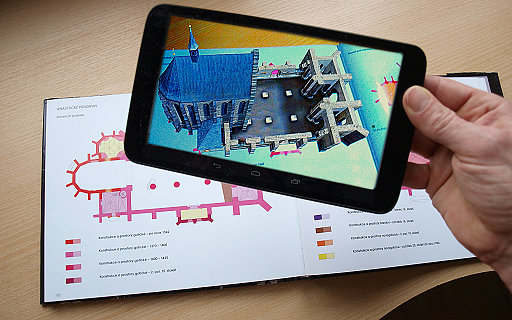
The Android AR application displays 3D model of the Cathedral of_St. Bartholomew (city of Plzeň) above the Cathedral ground plan, while the plan image fits the view of the mobile device camera.
How to use the application:
– download the app's APK file and install it on your Android device
– download the corresponding image and either print it or just display it on any screen
– launch the app and point the device camera to the image
– tap the 3D model to switch between the current building and its look during initial construction
How to use the application:
– download the app's APK file and install it on your Android device
– download the corresponding image and either print it or just display it on any screen
– launch the app and point the device camera to the image
– tap the 3D model to switch between the current building and its look during initial construction
Download:
Android Application File — VufTest.apkAR Model Target Image — arBart.jpg
Last Update 2016-05-05
Author's Note:
My first, very “generic” mobile AR application from 2016 (because of that, harmless “obsolescence warning” may be experienced during its installation process). Created more or less for testing purposes, based on the Vuforia plug‑in.
It may be considered as a complement to the publication “Cathedral of St. Bartholomew in Plzeň“ written by J. Soukup, M.Arch., because it uses one of the book illustrations as the AR target image.
The Jesuits Legacy (Telč, CZ)
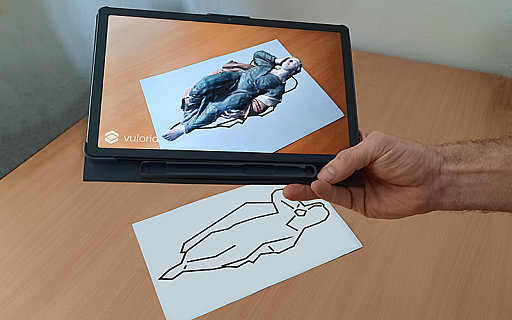
Three individual 3D sacral objects, related to Jesuits past in the Telč city region, are displayed by this Android AR application, when the mobile device camera points to their matching outline images.
How to use the application:
– download the app's APK file and install it on your Android device
– download the corresponding images and either print them or just display them successively on any screen
– launch the app, point the device camera to any of the images
– tap the appeared 3D model to switch between its versions (where available)
How to use the application:
– download the app's APK file and install it on your Android device
– download the corresponding images and either print them or just display them successively on any screen
– launch the app, point the device camera to any of the images
– tap the appeared 3D model to switch between its versions (where available)
Download:
Android Application File — jezuAR.apkAR Model Target Image — arCollege.jpg
AR Model Target Image — arJames.jpg
AR Model Target Image — arStatue.gif
Last Update 2020-06-10
Author's Note:
Simple mobile AR application, based on the Vuforia plug‑in, features three different objects – Jesuits College and Church of Saint James the Greater (displayed above their respective floor plans, both in their initial and current look), and a photogrammetric 3D model of 250 years old St. John statue from the local Museum collection, displayed over its outline image.
The application was part of the exhibition presenting results of the research project “Telč and Jesuits”, held in 2020.
showMobi2
showMobi3
Architecture
Machinery
Mobile
Beneš‑Hajn Avia BH 3
Aero L‑159 ALCA
Saab JAS‑39 “Gripen”
Lunar Module “Eagle”
Venus Probe “Venera 4”
Solar Eclipse Mechanism
Planet Landing Simulator
Fokker Dr.1 “Dreidecker”
3D Showroom: Archive of VRML based 3D scenes created prior to 2005 year
Beneš‑Hajn Avia BH 3

The scene shows the first monoplane introduced into the Czechoslovak Air Force, and probably the first monoplane fighter in any regular army service in the post‑WWI period.
The airplane was developed by two young designers Pavel Benes and Miroslav Hajn; the first prototype was built in their own company Avia in 1921.
It became famous for its exceptional speed, while its handling capabilities were appreciated by the nickname “The Bull”.
The aircraft's advanced design is accurately presented here both in normal and cutaway view and in the fighter and racing version. Detail of its BMW IIIa engine is also shown.
use the control stick and pedals to control its position in space
examine the function of wing and tail control surfaces
explore the inner structure of fuselage and wings
check the working 6‑cylinder engine
get the day/night view
and more…
Download size: 75 kB
The Avia model was created in the years 2001 – 2002, initially with different User Interface and without ability to change color schemes and to display inner framework. The code and file structure was optimized, more user-friendly interface developed and new features added in 2003.
The airplane was developed by two young designers Pavel Benes and Miroslav Hajn; the first prototype was built in their own company Avia in 1921.
It became famous for its exceptional speed, while its handling capabilities were appreciated by the nickname “The Bull”.
The aircraft's advanced design is accurately presented here both in normal and cutaway view and in the fighter and racing version. Detail of its BMW IIIa engine is also shown.
Scene Features:
choose between two attractive camouflage versions of the aircraftuse the control stick and pedals to control its position in space
examine the function of wing and tail control surfaces
explore the inner structure of fuselage and wings
check the working 6‑cylinder engine
get the day/night view
and more…
Download size: 75 kB
The Avia model was created in the years 2001 – 2002, initially with different User Interface and without ability to change color schemes and to display inner framework. The code and file structure was optimized, more user-friendly interface developed and new features added in 2003.
Aero L‑159 ALCA
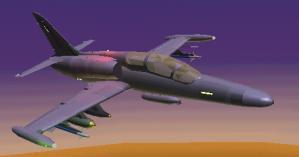
The model shows the Aero L-159 ALCA Advanced Light Combat Aircraft, developed and manufactured by Czech company Aero Vodochody upon the contract awarded by the Department of Defense in 1993. The design is based on the successful L-39/59 family, standard jet trainer of the former Warsaw Pact.
The airplane was introduced into Czech Air Force as a close air support/weapons trainer at the end of the year of 2000 and is currently operated in both single‑ and double‑seat versions.
Special attention was paid to the accuracy of the model. Various authentic color schemes and several armament combinations are presented.
use the control stick and pedals to change its pitch, yaw and roll
examine the function of wing and tail control surfaces
open and retract landing gear, flaps, air brakes
change the armament combinations
get the day/night view
and more…
Download size: 91 kB
The ALCA model was originally created around the year 1998, without the use of any 3d modeling software and with a text processor instead of then unavailable specialized editor of VRML language. A major rework was performed in 2003, concentrated on functionality enhancements, code modularity and general optimization.
The airplane was introduced into Czech Air Force as a close air support/weapons trainer at the end of the year of 2000 and is currently operated in both single‑ and double‑seat versions.
Special attention was paid to the accuracy of the model. Various authentic color schemes and several armament combinations are presented.
Scene Features:
choose between three different camouflage versions of the aircraftuse the control stick and pedals to change its pitch, yaw and roll
examine the function of wing and tail control surfaces
open and retract landing gear, flaps, air brakes
change the armament combinations
get the day/night view
and more…
Download size: 91 kB
The ALCA model was originally created around the year 1998, without the use of any 3d modeling software and with a text processor instead of then unavailable specialized editor of VRML language. A major rework was performed in 2003, concentrated on functionality enhancements, code modularity and general optimization.
Saab JAS‑39 “Gripen”
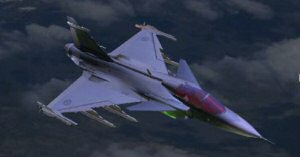
The scene shows the Swedish ”fourth generation“ fighter aircraft, featuring its elegant shapes and unique canard design.
It was developed by the association of companies led by Saab in accordance with the contract awarded by the Swedish Defense Material Administration on June 30, 1982. It was conceived as a light‑weight airplane, easy to operate and maintain, and able to use unpaved airfields. The fighter entered service in Swedish Air Force in 1993.
At present it is operated also by South Africa, Czech Republic, Hungary and Thailand and substantial effort is made to break into South American and East European markets.
use the control stick and pedals to control its position in space
examine the design of Gripen´s RB12 engine and BK27 gun
open and retract the landing gear, flaps and air brakes
explore the inner structure of the fuselage and wings
change the armament combinations
and more…
Download size: 227 kB
Development of the Gripen model began in 2002. Most of the code was adapted from previous aircraft projects, while the work on the airplane geometry itself was slow due to lack of any accurate information about its shape and structure. Minor refinements continue to these days as the construction details are gradually unveiled.
It was developed by the association of companies led by Saab in accordance with the contract awarded by the Swedish Defense Material Administration on June 30, 1982. It was conceived as a light‑weight airplane, easy to operate and maintain, and able to use unpaved airfields. The fighter entered service in Swedish Air Force in 1993.
At present it is operated also by South Africa, Czech Republic, Hungary and Thailand and substantial effort is made to break into South American and East European markets.
Scene Features:
choose between various realistic camouflage versions of the aircraftuse the control stick and pedals to control its position in space
examine the design of Gripen´s RB12 engine and BK27 gun
open and retract the landing gear, flaps and air brakes
explore the inner structure of the fuselage and wings
change the armament combinations
and more…
Download size: 227 kB
Development of the Gripen model began in 2002. Most of the code was adapted from previous aircraft projects, while the work on the airplane geometry itself was slow due to lack of any accurate information about its shape and structure. Minor refinements continue to these days as the construction details are gradually unveiled.
Lunar Module “Eagle”
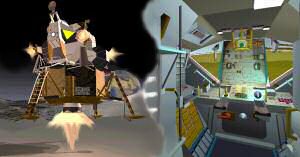
The purpose of this scene was to present and educate about something as complex as the ship which took part in one of the most remarkable adventures of the last century – deploying the people to the lunar surface.
The famous spider‑like lander transported its two‑men crew six times successfuly to the Moon and back to orbit without suffering any significant failure.
The scene shows the landing sequence of the Lunar Module, offers an unique view under the Lunar Module skin, allows to enter and examine its tight cockpit and provides a one‑click information about all of its systems.
begin the LM landing procedure from the Moon orbit
watch and hear the jet flame bursts during landing
examine in detail the LM and its inner structure
enter and explore the compact LM cockpit
launch the LM Ascent Stage back home
and more…
Download size: 240 kB
This is the Author´s “pet” project. He values in particular the amount of technical information about the LM systems, which was put in. The first version of this project was created as early as in 1996! It underwent numerous face lifts since then, and another round of much needed improvements and corrections is scheduled for the near future.
The famous spider‑like lander transported its two‑men crew six times successfuly to the Moon and back to orbit without suffering any significant failure.
The scene shows the landing sequence of the Lunar Module, offers an unique view under the Lunar Module skin, allows to enter and examine its tight cockpit and provides a one‑click information about all of its systems.
Scene Features:
obtain comprehensive information about all LM systemsbegin the LM landing procedure from the Moon orbit
watch and hear the jet flame bursts during landing
examine in detail the LM and its inner structure
enter and explore the compact LM cockpit
launch the LM Ascent Stage back home
and more…
Download size: 240 kB
This is the Author´s “pet” project. He values in particular the amount of technical information about the LM systems, which was put in. The first version of this project was created as early as in 1996! It underwent numerous face lifts since then, and another round of much needed improvements and corrections is scheduled for the near future.
Venus Probe “Venera 4”
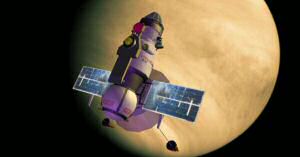
This simple scene presents the Soviet probe “Venera 4”, the first space vehicle which managed successfuly to complete the scientific measurements directly in hostile Venus atmosphere and to send the obtained data back to Earth.
It was a part of the first phase of well known “Venera” series, which consisted from numerous fly-bys in close proximity of the mysterious planet.
The second phase, performed by technologically more advanced probes, later lead to numerous soft landings on the Venus hot surface and to hundreds of photographs of its till then unseen landscape scenery.
view the “Venera 4” Probe flyby over mysterious planet face
examine the sophisticated Probe shapes in dim Venus light
watch the Probe spinning in front of your eyes
explore the Probe design in predefined views
learn about its history
and more…
Download size: 73 kB
This scene was designed with the goal to test a variety of ways to achieve as low file sizes and polygon counts as possible. LOD (level of detail) switching on some parts was tested and used. In general – simple but surprisingly good‑looking model.
It was a part of the first phase of well known “Venera” series, which consisted from numerous fly-bys in close proximity of the mysterious planet.
The second phase, performed by technologically more advanced probes, later lead to numerous soft landings on the Venus hot surface and to hundreds of photographs of its till then unseen landscape scenery.
Scene Features:
enjoy the dazzling view to the vibrant near-Venus Space sceneryview the “Venera 4” Probe flyby over mysterious planet face
examine the sophisticated Probe shapes in dim Venus light
watch the Probe spinning in front of your eyes
explore the Probe design in predefined views
learn about its history
and more…
Download size: 73 kB
This scene was designed with the goal to test a variety of ways to achieve as low file sizes and polygon counts as possible. LOD (level of detail) switching on some parts was tested and used. In general – simple but surprisingly good‑looking model.
Solar Eclipse Mechanism
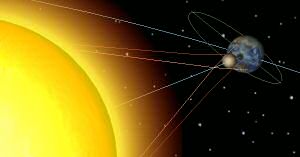
The Solar Eclipse is one of the most spectacular astronomical events, admired and known well even by ordinary people otherwise not overly interested in what happens beyond the boundary of their everyday life.
The scene tries to explain how the Eclipse occures. It shows the Moon orbiting around the Earth, and the shadow cast to its surface as it passes between the Earth and Sun.
In order to make the Eclipse mechanism even easier to understand, the scene allows to stop the motion of involved Space objects in the right time and view the Eclipse from the predefined positions and angles.
discover the complexity of the objects´ realistic motion trajectories
see the eclipsing Moon passing gradually in front of the Earth
watch the shadow travelling over the Earth surface
freeze the Universe in the exact time of Eclipse
check the Eclipse from predefined views
and more…
Download size: 55 kB
The model, made around the year of 2000, was a reaction to Author´s surprising discovery that many presumably educated people do not have a clue about why the Solar Eclipse happens, not to speak about the structure of the Solar system in general – that all at the down of the much enlightened XXI. century! :‑)
The scene tries to explain how the Eclipse occures. It shows the Moon orbiting around the Earth, and the shadow cast to its surface as it passes between the Earth and Sun.
In order to make the Eclipse mechanism even easier to understand, the scene allows to stop the motion of involved Space objects in the right time and view the Eclipse from the predefined positions and angles.
Scene Features:
enjoy the view of Sun, Earth and Moon floating and flying in Spacediscover the complexity of the objects´ realistic motion trajectories
see the eclipsing Moon passing gradually in front of the Earth
watch the shadow travelling over the Earth surface
freeze the Universe in the exact time of Eclipse
check the Eclipse from predefined views
and more…
Download size: 55 kB
The model, made around the year of 2000, was a reaction to Author´s surprising discovery that many presumably educated people do not have a clue about why the Solar Eclipse happens, not to speak about the structure of the Solar system in general – that all at the down of the much enlightened XXI. century! :‑)
Planet Landing Simulator
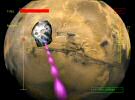
Small and simple game – land on a planet! Start from its orbit, penetrate through a turbulent atmosphere and use the throttle wisely to save enough fuel for the approach to the landing point.
Another threat comes from the meteors attacking the ship during the descent. If missed by the on‑board laser gun, the ship absorbs the hit at the cost of the precious fuel. The user has thus the choice to descent quickly to avoid meteors and risk a lack of fuel for final braking, or to land slowly and try to shoot down all incoming obstacles.
Real gravity law as well as other quite disturbing effects are also implemented to make the journey to the surface more exciting.
use the throttle to control landing speed and fuel consumption
defend the ship against incoming meteors
experience dramatic entrance into the atmosphere
try to slow down to touchdown speed
enjoy the wild landscape view
and more…
Download size: 75 kB
The Planet Landing game was completed in the year 2001 for the multimedia CD title “Explore the Secrets of the Planets” targeted to grammar school children and certified by the Czech Ministry of Education for use in the Czech educational system. Its updated version also took part in the 2002 Eurographics Web3D Game Competition.
Another threat comes from the meteors attacking the ship during the descent. If missed by the on‑board laser gun, the ship absorbs the hit at the cost of the precious fuel. The user has thus the choice to descent quickly to avoid meteors and risk a lack of fuel for final braking, or to land slowly and try to shoot down all incoming obstacles.
Real gravity law as well as other quite disturbing effects are also implemented to make the journey to the surface more exciting.
Scene Features:
select from the list of available planets to landuse the throttle to control landing speed and fuel consumption
defend the ship against incoming meteors
experience dramatic entrance into the atmosphere
try to slow down to touchdown speed
enjoy the wild landscape view
and more…
Download size: 75 kB
The Planet Landing game was completed in the year 2001 for the multimedia CD title “Explore the Secrets of the Planets” targeted to grammar school children and certified by the Czech Ministry of Education for use in the Czech educational system. Its updated version also took part in the 2002 Eurographics Web3D Game Competition.
Fokker Dr.1 “Dreidecker”
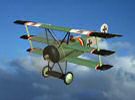
The airplane became the symbol of the WWI air warfare, both for its typical triplane silhouette and for its connection to the famous German pilot – the “Red Baron” Von Richthofen.
The aircraft was developed by the Foker company as a small, rotary‑powered triplane with a steel tube fuselage and thick cantilever wings. Even when its speed and rate of climb in higher altitudes were behind the performance of its opponents, the pilots highly valued its exceptional maneuverability.
The model shows this famous fighter and its brave pilot including his mustache and waving scarf. It also offeres a look into the airplanes´ opened rotary engine.
slow down its engine to see its rotating pistons
admire the pilots´ long white waving scarf
switch to detailed view of the engine
see its inner parts to move
try to guess how it works
and more…
Download size: 75 kB
The model of this ostensibly cute aircraft was created before the beginning of this century :-). It does not have yet an update of the User Interface and also the principle of the rotary engine shown here is not quite correct. The model definitely deserves a general upgrade and correction of numerous inaccuracies.
The aircraft was developed by the Foker company as a small, rotary‑powered triplane with a steel tube fuselage and thick cantilever wings. Even when its speed and rate of climb in higher altitudes were behind the performance of its opponents, the pilots highly valued its exceptional maneuverability.
The model shows this famous fighter and its brave pilot including his mustache and waving scarf. It also offeres a look into the airplanes´ opened rotary engine.
Scene Features:
enjoy the look of this toy‑like airplane with an attractive camouflageslow down its engine to see its rotating pistons
admire the pilots´ long white waving scarf
switch to detailed view of the engine
see its inner parts to move
try to guess how it works
and more…
Download size: 75 kB
The model of this ostensibly cute aircraft was created before the beginning of this century :-). It does not have yet an update of the User Interface and also the principle of the rotary engine shown here is not quite correct. The model definitely deserves a general upgrade and correction of numerous inaccuracies.
Czech Borders
Kitchy Photos
My 3D Globe: Edifices on the Globe
tripEdif0
tripEdif1
tripEdif2
tripEdif3
Globe Edifices
Kitchy Photos
My 3D Globe: Around the Czech Borders
tripBord0
tripBord1
tripBord2
tripBord3
Globe Edifices
Czech Borders
My 3D Globe: Kitchy Photos Digest
tripPhoto0
tripPhoto1
tripPhoto2
tripPhoto3
Credits
News & Notes: News
Disclaimer
The Author hereby confesses he is well aware of the overly colourful look of his webpage. He states the following in his defence:– The flamboyant coloring is just a side effect of my learning experiments with HTML and especially with CSS.
As a result, the visual elements, such as colored toolbars, lines, bullets, header text decoration, “glass” effects, and even the background pattern and gradients, were created solely by HTML & CSS code, without any texture or image files.
News
News & Notes: Credits
neni Wide newsCred0 Tag Canvas http://www.goat1000.com/tagcanvas.php Lea Verou http://lea.verou.me/
References
About Author: Contact & Curriculum Vitae
Ivan Klíma
born: Plzeň, Czech Republiceducation: Master's Degree – Nuclear Design, Mechanical University of Plzeň, CZ; IAEA fellowship at MIT Boston, USA
occupation: researcher & 3D modeler in a joint team of NHI Telč and Institute of History CAS
e‑mail: ivan3d at ivan3d dot cz
Of course I have many other hobbies like books, travelling, biking, running barefoot through the summer morning dew, drinking beer etc.; but as the content of this site deals mainly with my 3D, engineering and educational achievements, let's stay focused on that:
Since my early school days I enjoyed reading about the greatest marvels of the engineering and technology – steam engines, airplanes, the adventures of the space exploration… Fortunately, soon enough I myself got a chance to become part of one undoubtedly adventurous technological project – as a member of the Westinghouse fuel design team in South Carolina I participated at the world's‑first adaptation of a western nuclear fuel design to the eastern power reactor – Czech NPP Temelín.
My second “world's‑first” came just a few years later. During my stay at MIT in Boston I fell in love with 3D computer graphics and met there with a group of similarly focused MIT and Cambridge University graduates. As a part of their effort to develop and sell a plug‑in, enabling then popular web browser Netscape Navigator to display on‑line 3D objects, we jointly created one of the world's‑first interactive 3D on‑line scenes, later used as a commercial for the company LG Electronics.
My third “world's‑first” was a logical result of the original interest in technology combined with the new passion for the art of 3D interactive graphics: In 2008, I took part in the successful 3D digitalization of the historical Langweil's paper model of Prague city. It consisted of nearly 3 000 buildings and 5 000 pieces of vegetation, all created by a single person, humble Clementinum library valet Antonín Langweil, at the beginning of the nineteenth century.
The final product – an interactive 3D digital representation of over 20 m² paper model area, is a result of the world's‑first contactless 3D digitalization process performed at such a large scale.
The Langweil case made me realize that people's stories can be sometimes equally remarkable as the technological wonders. It brought the history to the list of my hobbies and got me where I am now – blatantly enjoying myself using advanced 3D tools to educate interested audience about the great achievements of architecture and technology in the human history, and paying so at least a small tribute to those sometimes forgotten great minds behind them.
Curriculum Vitae
Škoda Nuclear, Plzeň, CZ – Design Division, Development Unit– involvement in the reactor vessel remote inspection system SKIN feature upgrade
– design of the radiation detection systems testing rig for the NPP Dukovany
and quite a few other projects
Westinghouse, Columbia SC, USA – Nuclear Fuel Design Division
As a member of the VVER Fuel Team I actively participated at:
– design and load calculations of mechanical parts of the fuel assemblies
– design and implementation of mechanical testing program of the fuel connection joints
The whole team received the “George Westinghouse Innovation Award”
MIT, Boston MA, USA – one‑year IAEA fellowship
– study specialization “Design Materials of Nuclear Systems”
Online Environs, Inc. – collaboration with the Boston‑based start‑up
– involved in a company effort to develop and commercially utilize then new and promising 3D viewing internet technology VRML
– the winner of the “Engineering Applications” category at the SGI‑organized annual competition “VRML Award”
Škoda Works, Plzeň, CZ – member of the “Strategy Team” – an advisers body of the General Manager
“Web3D RoundUp” – participation at the Web3D competition held during the SIGGRAPH conference in Los Angeles, CA
– advanced to finals, my entry presented live during the final “RoundUp” ceremony
MeetFactory Oy – collaboration with the Helsinki‑based Finland start‑up
– engaged in the design of internet 3D virtual environments
Institutt for Energiteknikk, Halden, Norway – Man‑Machine Interface Division
My work in the highly acclaimed research facility was focused on the applications of various 3D technologies to the nuclear environment, such as:
– interactive visualization of nuclear fuel exchange in the Halden research reactor
– visual description of radioactivity levels in the Halden reactor hall
– visualization of ionization flux levels inside the International Space Station (ISS)
and many other areas
Freelance 3D developer – specialized in interactive visualizations of industrial and education‑related topics
I tried hard to utilize both the engineering and 3D‑related experience gained during all my previous assignments in the meaningful projects only, it means in those, having – apart from just commercial – also educational, aestetical or other added value.
Quite fortunately most of my projects met such criterion (well, at least in my humble opinion), and in general they were more challenging – and enhancing – in the fields like architecture, history or engineering, than in pure 3D‑making.
The most notable ones are described in the References tab section.
2016 ‑ 2020: NHI Telč, CZ – researcher & 3D modeller
Member of the joint team of NHI and Czech Institute of History, engaged in the Czech Ministry of Culture research project “Telč and Jesuits, the Order and its Patrons”; quite enjoyable job assignment which brought me in touch with the “magic world” of humane‑educated academics and historians
The project's goal was to describe mutual interaction between the Order and a local nobility as well as to assess the Order's contribution to the architectural heritage of the historical Telč city area.
My activities as a researcher were focused on the following areas:
– review of historical resources related to architectural objects of interest as well as their physical research on‑site
– drone photogrammetry documentation of historical buildings and artefacts, its processing into the 3D models
– creation of optimized interactive 3D models and mobile AR apps for the project outcomes dissemination
– publishing articles, lecturing, presentations
2021 ‑ now: Freelance 3D developer – specialized in interactive visualizations of historical architecture
Some distinctive projects are described in the References tab section.
Contact & CV
About Author: References
Interactive Aircraft Models for the Flight Data Evaluation Systems (FDES)
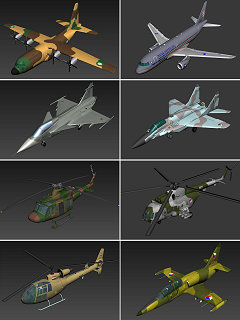 Ongoing collaboration with the FDES manufacturer SPEEL – the Czech Aerospace Research Centre spin-off – on the development of accurate dynamic aircraft models for visual interpretation of the FDES flight data records
Ongoing collaboration with the FDES manufacturer SPEEL – the Czech Aerospace Research Centre spin-off – on the development of accurate dynamic aircraft models for visual interpretation of the FDES flight data recordsresearch of the aircraft documentation
creation of dimensionally accurate and fully textured aircraft 3D models
defining motion ranges and axes of rotation of the movable parts
export into the FDES visualisation system
“Langweil's Prague” – 3D Digitalization of the 19th Century Paper Model
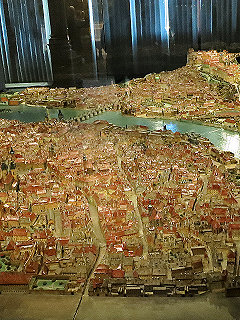 World's unique non-contact 3D scan and virtual model creation of about 20 m2 miniature (approx. 1:400 scale) Prague city paper model built in 1830
World's unique non-contact 3D scan and virtual model creation of about 20 m2 miniature (approx. 1:400 scale) Prague city paper model built in 1830two years assignment as a chief 3D modeler responsible for the final geometry optimization and integration
creation of 3D stereo movie, permanently on display at the Langweil exhibition
Project owner: the Prague City Museum
Contact:
Curator PhDr. K. Bečková (tel. +420 251 106 565)
Project Manager Ing. J. Buriánek (tel. +420 261 260 218)
Contact:
Curator PhDr. K. Bečková (tel. +420 251 106 565)
Project Manager Ing. J. Buriánek (tel. +420 261 260 218)
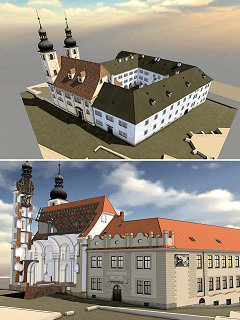 Member of a multilatelar scientific team exploring the impact of the Jesuit Order on cultural and architectural development of the Telč city region
Member of a multilatelar scientific team exploring the impact of the Jesuit Order on cultural and architectural development of the Telč city regionfive years assignment as a researcher and 3D modeler
research of historical documentation related to the local architecture
on‑site exploration of architectural objects of interest
drone photogrammetric documentation of historical objects, its processing into 3D models
created interactive 3D models and mobile AR apps for the project presentation
lectures, publishing articles, general project results dissemination
For the project 3D outcomes see the outcomes page
Awarding authority: Ministry of Culture Czech Republic
Contact:
Project Lead Mgr. K. Bobková‑Valentová, Ph.D (tel. +420 225 443 236)
Contact:
Project Lead Mgr. K. Bobková‑Valentová, Ph.D (tel. +420 225 443 236)
Visualization of an Early Medieval Settlement at Starý Plzenec Area
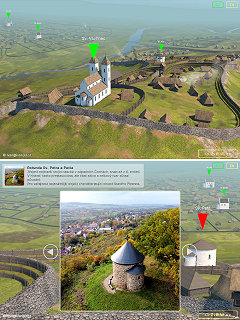 Visualization of the ancient populated area near Plzeň town, including fortification and cross-sections of important buildings
Visualization of the ancient populated area near Plzeň town, including fortification and cross-sections of important buildings3D model created in accordance with archeological findings in close collaboration with the local museum specialists
rendered animation sequences for the video document, part of the permanent exhibition at the West-Bohemian Museum
3D model converted into an interactive form and integrated into the Starý Plzenec web page (⇒ menu ⇒ Model…)
Customer: the West‑Bohemian Museum Plzeň and Starý Plzenec municipality
Contact:
Museum Director Mgr. J. Orna (tel. +420 378 370 110)
Municipality of Starý Plzenec (tel. +420 377 183 655)
Contact:
Museum Director Mgr. J. Orna (tel. +420 378 370 110)
Municipality of Starý Plzenec (tel. +420 377 183 655)
Interactive Visualization of the Great Synagogue of Plzeň
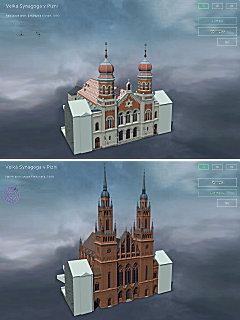 Visualization of the second largest synagogue in Europe in its both known versions – the existing building, designed by arch. Emmanuel Klotz in 1890 – and the original project submitted by the renowned Jewish Viennese architect Max Fleischer and refused by the Plzeň city councilors in the 1888 year
Visualization of the second largest synagogue in Europe in its both known versions – the existing building, designed by arch. Emmanuel Klotz in 1890 – and the original project submitted by the renowned Jewish Viennese architect Max Fleischer and refused by the Plzeň city councilors in the 1888 yearresearch and evaluation of the original XIX. century construction documentation
participation at subsequent visual appearance reconstruction of the Fleischer's design performed by J. Soukup, M.Arch.
created 3D models of both existing and originally planned synagogue version incl. crossections with interiors
3D models converted into an optimized interactive 3D scene and integrated to the Jewish Community web page
Customer: the Jewish Community Plzeň
Contact:
Plzeň Jewish Community Head Jiří Lowy (tel. +420 377 235 749)
J. Soukup, M.Arch. (Atelier Soukup Opl Svehla)
Contact:
Plzeň Jewish Community Head Jiří Lowy (tel. +420 377 235 749)
J. Soukup, M.Arch. (Atelier Soukup Opl Svehla)
Visualization of Architectural Development of the St. Bartholomew's Cathedral in Plzeň
 Illustration of the Cathedral's changes in structure and appearance throughout the history for the book “Cathedral of St. Bartholomew in Plzeň“ written by J. Soukup, M.Arch.
Illustration of the Cathedral's changes in structure and appearance throughout the history for the book “Cathedral of St. Bartholomew in Plzeň“ written by J. Soukup, M.Arch.participation at the reconstruction of the building's architectural development performed by the book author
created 3D models describing the Cathedral's four historical phases
rendered illustrations for the printed publication
created Android mobile AR app displaying relevant 3D objects over the book illustrations
Illustration of Architectural Development of the Roman Church of St. Nicholas in Potvorov
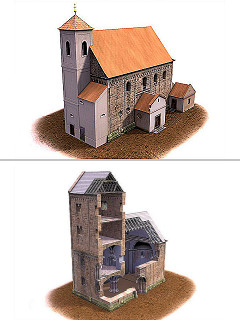 Visualization of the XIII. century Roman monument (one of the oldest in West Bohemia region) and its estimated original look for the printed media published by the local Potvorov Society
Visualization of the XIII. century Roman monument (one of the oldest in West Bohemia region) and its estimated original look for the printed media published by the local Potvorov Societyparticipation at the reconstruction of the building's initial appearance performed by J. Soukup, M.Arch.
created 3D models of both current and initial look of the building, including interior cross-sections
rendered illustrations for the printed brochure and posters
3D models converted into an optimized interactive 3D scene and integrated to the Potvorov Society web page
Visualization of the Baroque Provostry Mariánská Týnice
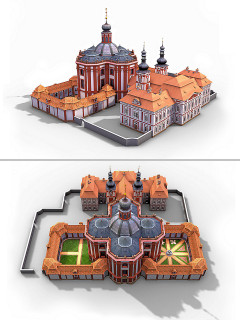 3D visualization of the national heritage object designed by the famous baroque architect Jan Blažej Santini
3D visualization of the national heritage object designed by the famous baroque architect Jan Blažej SantiniIt was completed just recently by erecting the east cloister, included in the original XVIII. century project, but missing for over three hundred years.
created detailed 3D model of the baroque provostry in Mariánská Týnice and its newly built east annexe
rendered illustrations for brochures and posters (widely published in media)
animations for the video document (director M. Šandová – “Baroque Mirror”)
the model used in the AR application – component of the West Bohemian exhibition at EXPO 2015 Milan, Italy
Customer: the Museum of Northern Plzeň Region in Mariánská Týnice
Contact:
Museum Director Mgr. Pavel Kodera, Ph.D. (tel. +420 373 396 410)
Contact:
Museum Director Mgr. Pavel Kodera, Ph.D. (tel. +420 373 396 410)
3D Information System for the Building Heritage Centre at Plasy
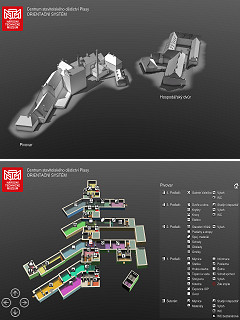 Touchscreen UI‑controlled 3D navigation throughout the Centre's objects – XIX. century brewery and farming yard – including foldable floor plans and relevant text information
Touchscreen UI‑controlled 3D navigation throughout the Centre's objects – XIX. century brewery and farming yard – including foldable floor plans and relevant text informationcreated interactive 3D models of both Centre's buildings and their individual floors
developed touchscreen app revealing the floor arrangements with distinguished exhibition areas and their text description
the app displayed at the large screen became a permanent part of the exhibition
Project owner: the National Technical Museum
Created for‑ and in collaboration with‑ the AV Media company
Contact:
Project Manager Ing. J. Buriánek (tel. +420 261 260 218)
Created for‑ and in collaboration with‑ the AV Media company
Contact:
Project Manager Ing. J. Buriánek (tel. +420 261 260 218)
Interactive Visualization of the Waste Incineration Plant ZEVO Plzeň for its Information Centre
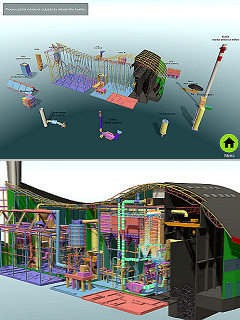 Interactive touchscreen 3D model of the Waste Incineration Plant, illustrating its structure and principles of operation
Interactive touchscreen 3D model of the Waste Incineration Plant, illustrating its structure and principles of operationcreated 3D model of the plant, its interior systems and animation of technological processes
developed touchscreen app allowing to interactively assemble the Plant and to visualize its operation
the project became a permanent part of the plant Information Centre exposition
Project owner: the Plzeňská Teplárenská a.s.
Created for‑ and in collaboration with‑ the AV Media company
Contact:
Project Manager Ing. J. Buriánek (tel. +420 261 260 218)
Created for‑ and in collaboration with‑ the AV Media company
Contact:
Project Manager Ing. J. Buriánek (tel. +420 261 260 218)
Line of Animated Visualizations for the Information Centre of NPP Dukovany
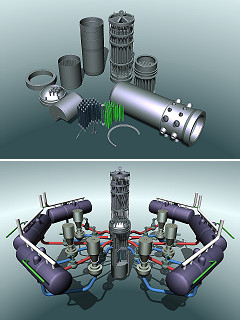 Series of technical animations, illustratively explaining the NPP structure, function and purpose of its individual elements, integrated into the Centre's interactive exhibition items
Series of technical animations, illustratively explaining the NPP structure, function and purpose of its individual elements, integrated into the Centre's interactive exhibition itemsvisualization of the NPP's VVER440 type reactor design, operation and control principles
description of a nuclear fuel design
presentation of the complete powerplant fuel cycle
the project became a permanent part of the plant Information Centre exposition
Project owner: the ČEZ Group
Created for‑ and in collaboration with‑ the AV Media company
Contact:
Project Manager Ing. J. Buriánek (tel. +420 261 260 218)
Created for‑ and in collaboration with‑ the AV Media company
Contact:
Project Manager Ing. J. Buriánek (tel. +420 261 260 218)
“Build Your Own 3D Plum Brandy Distillery” for the Slivovitz Museum
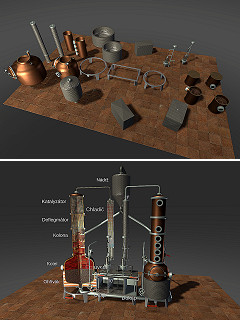 Interactive touchscreen 3D model of the Distillery, illustrating its structure and the plum brandy production
Interactive touchscreen 3D model of the Distillery, illustrating its structure and the plum brandy productioncreated 3D model of a distilling system, animation of its assembly procedure and principles of operation
developed touchscreen app showing the plum processing and allowing interactive assembly of the Distillery
the project became a permanent part of the Museum exposition
Project owner: Rudolf Jelínek a.s.
Created for‑ and in collaboration with‑ the AV Media company
Contact:
Project Manager Ing. J. Buriánek (tel. +420 261 260 218)
Created for‑ and in collaboration with‑ the AV Media company
Contact:
Project Manager Ing. J. Buriánek (tel. +420 261 260 218)
“Build Your Own 3D Steam Engine” for the Prague Exhibition of the Museum of Agriculture
 Interactive touchscreen 3D model of the Steam Engine, illustrating its structure and principles of operation
Interactive touchscreen 3D model of the Steam Engine, illustrating its structure and principles of operationcreated 3D model of the engine, animation of its assembly procedure and kinematics of its crankshaft mechanism
developed touchscreen app showing the steam flow utilization and allowing interactive assembly of the engine
the project became a permanent part of the Museum exposition
Project owner: National Museum of Agriculture
Created for‑ and in collaboration with‑ the AV Media company
Contact:
Project Manager Ing. J. Buriánek (tel. +420 261 260 218)
Created for‑ and in collaboration with‑ the AV Media company
Contact:
Project Manager Ing. J. Buriánek (tel. +420 261 260 218)
Series of Educational CD Titles with Science and Engineering Content
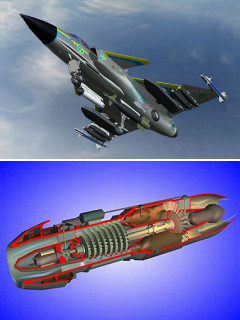 Line of CDs, certified both by the Czech and Slovak Ministry of Education for use in basic schools and containing numerous “How it works” interactive 3D scenes covering mainly science and engineering topics
Line of CDs, certified both by the Czech and Slovak Ministry of Education for use in basic schools and containing numerous “How it works” interactive 3D scenes covering mainly science and engineering topicsBroad and interesting, but already ancient project from the very dawn of the XXI. century, mentioned here mainly because of nostalgia. The 3D content of the CDs, while modestly sophisticated, was based on now obsolete VRML technology.
co-creator of the 3D interactive part
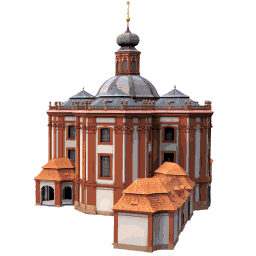 AltObrazku
AltObrazku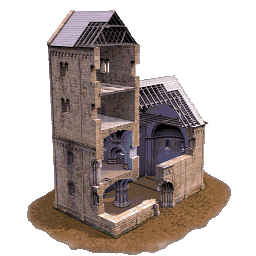 AltObrazku
AltObrazku
